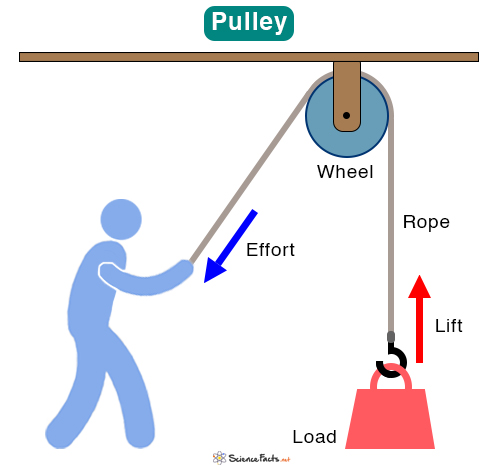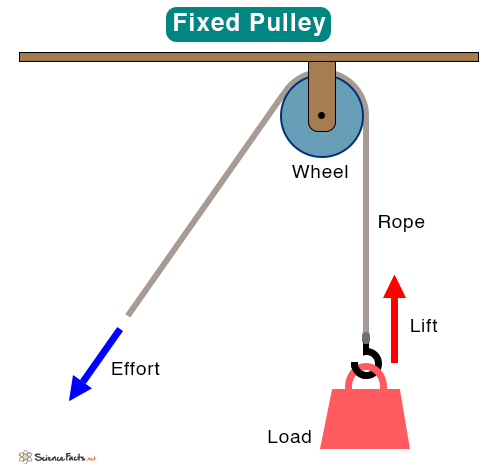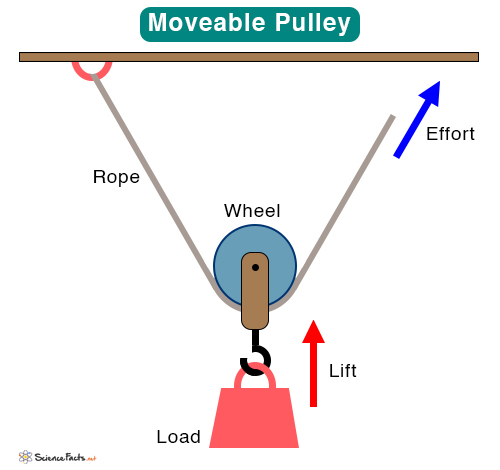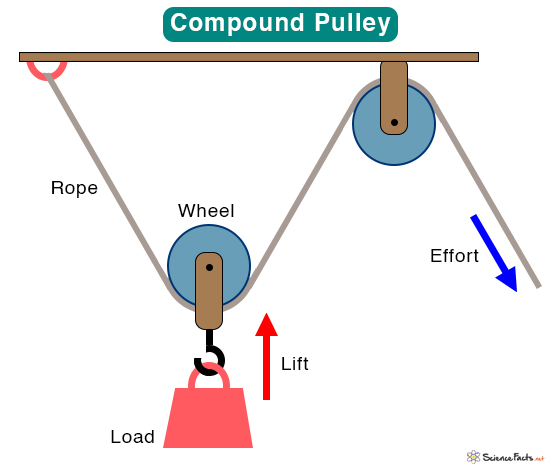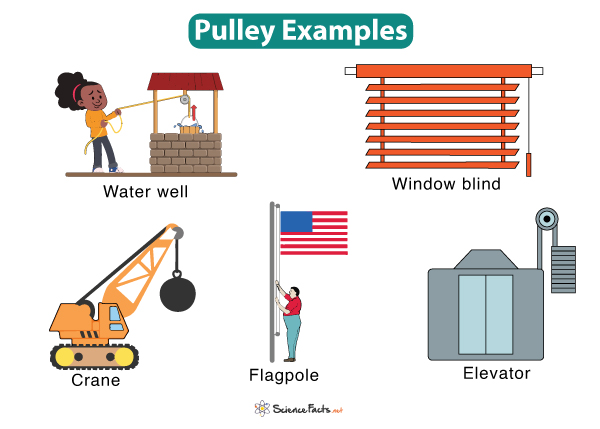The Greek mathematician and physicist Archimedes is credited to have invented the pulley in the 3rd century B.C.
How Does a Pulley Work
Mechanical Advantage of a Pulley
Types of Pulley
Uses and Applications of Pulley
1. Fixed Pulley
Also known as a single pulley, it is the simplest of all pulleys. The pulley is fixed to one spot, and the wheel rotates about its axle. The rope moves over the wheel, pulling the load. The effort required to lift the object is the same as its weight. Hence, the mechanical advantage is equal to 1. Examples: Pulleys used in flag poles, window blinds & curtains, clotheslines, and water wells
2. Movable Pulley
It is slightly complex than the fixed pulley. The pulley does not remain fixed. It is attached to the load, and the two move together. The disadvantage is that the pulley itself adds to the weight of the load. This pulley is suitable when the load is below the person lifting them. Example: Pulley used in a zip line
3. Compound Pulley
It combines fixed and moveable pulleys. The advantage of this system of pulleys is that the effort required to move a load is less than half the load. The more the number of pulleys, the less is the effort. The mechanical advantage is always greater than 2. However, the disadvantage of using a compound system is that the length of the rope and the distance it travels increase. It means that a longer time is required to lift the load. A system of two pulleys is called a double pulley. Example: Block and tackle and pulleys used in construction cranes, modern elevators, and exercise equipments
